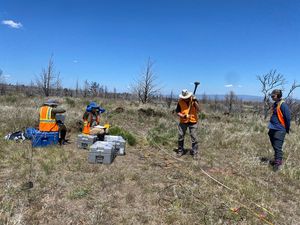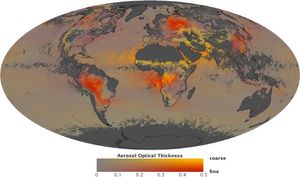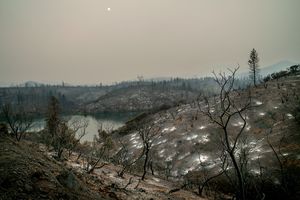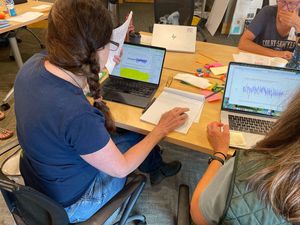Recent Earth Science News and Articles
Stay up-to-date with the latest news and articles from NASA Earth as we discover more about our home planet.

With several hundred blows of a 10-pound (4.5-kilogram) sledgehammer, researchers tested a method to find subsurface caves that could serve as safe underground habitats and research facilities on the Moon and Mars. The team, which includes NASA scientists, conducted their…

NASA uses satellites, ground measurements, and powerful computer models to track tiny particles floating in our air called aerosols.

NASA has selected Science and Technology Corp. of Columbia, Maryland, to support atmospheric science research and development at the agency’s Goddard Space Flight Center in Greenbelt, Maryland. The Atmosphere Support is a cost-plus-fixed-fee, single-award indefinite-delivery/indefinite-quantity contract with a maximum ordering…

Magic is in the air. No wait… MAGEQ is in the air, featuring scientists from NASA centers across the country who teamed up with the National Oceanic and Atmospheric Administration (NOAA), the University of Maryland Baltimore County, and several other…

When wildfires scorch a landscape, the flames are just the beginning. NASA is helping U.S. communities foresee and prepare for what can follow: mudslides, flash flooding, and contaminated water supplies.

Read this press release in English here. La NASA y la Administración Nacional Oceánica y Atmosférica (NOAA, por sus siglas en inglés) lanzaron el miércoles tres nuevas misiones para investigar la influencia del Sol en todo el sistema solar. A las…

Lee este comunicado de prensa en español aquí. NASA and the National Oceanic and Atmospheric Administration (NOAA) launched three new missions Wednesday to investigate the Sun’s influence across the solar system. At 7:30 a.m. EDT, a SpaceX Falcon 9 rocket lifted…

Implementing place-based and data-rich instruction requires navigating a complex tug-of-war between place, data, phenomena, science, and a variety of other foci. Supporting teachers to navigate their place-based, data-rich journeys using NASA resources presents incredible opportunities for linking locally relevant issues,…

With the end of summer approaching in the Northern Hemisphere, the extent of sea ice in the Arctic shrank to its annual minimum on Sept. 10, according to NASA and the National Snow and Ice Data Center. The total sea…

The NASA STEM (Science, Technology, Engineering, and Mathematics) Enhancement in Earth and Space Science (SEES) Internship Program at the University of Texas Center for Space Research is a national high school research experience that provides students with direct access to…

One of the challenges many teachers face year after year is a sense of working alone. Despite the constant interaction with students many questions often linger: Did the lesson stick? Will students carry this knowledge with them? Will it shape…

A massive earthquake and subsequent tsunami off Russia in late July tested an experimental detection system that had deployed a critical component just the day before. A recent tsunami triggered by a magnitude 8.8 earthquake off Russia’s Kamchatka Peninsula sent…
Connect with us on your favorite social media channel


























